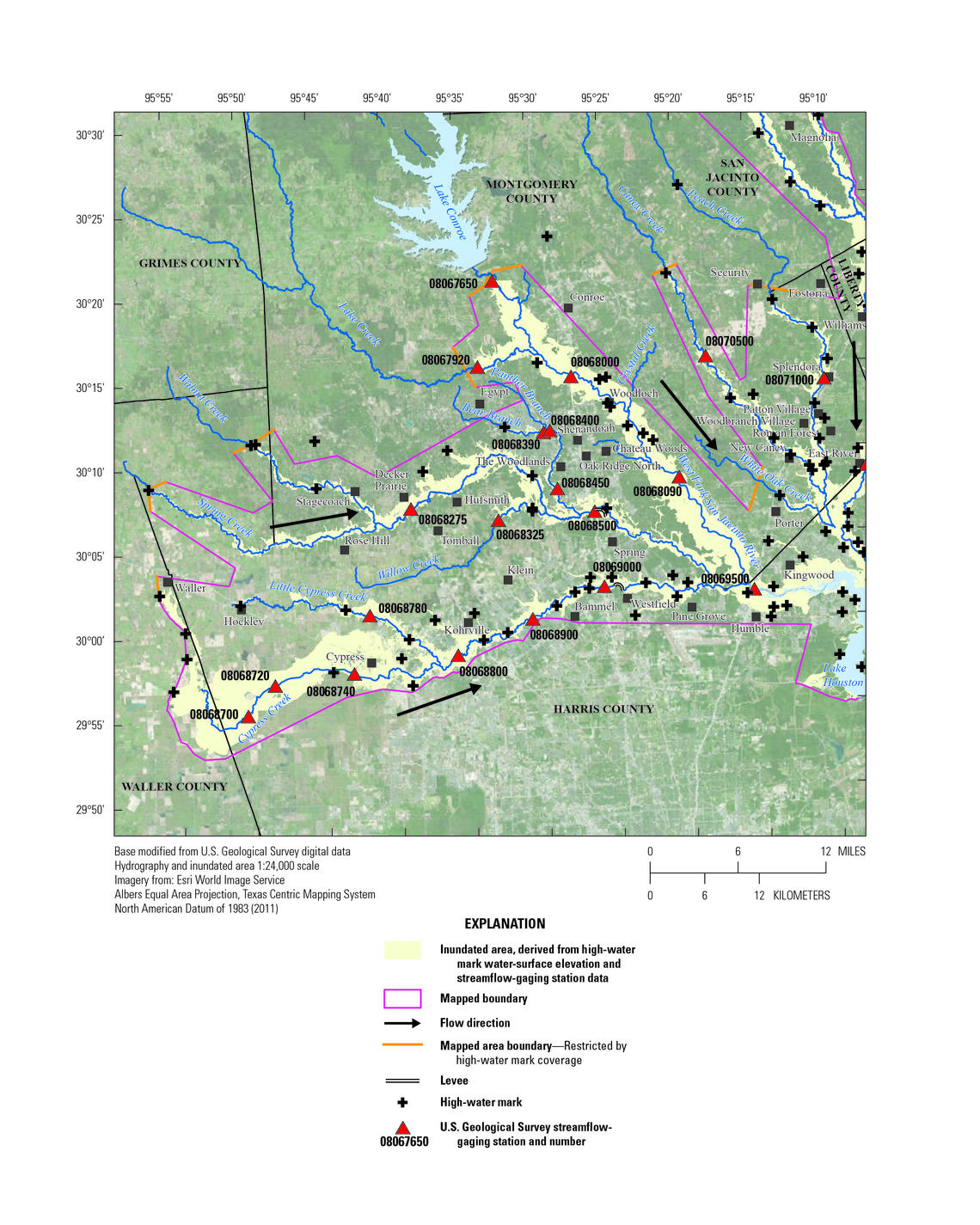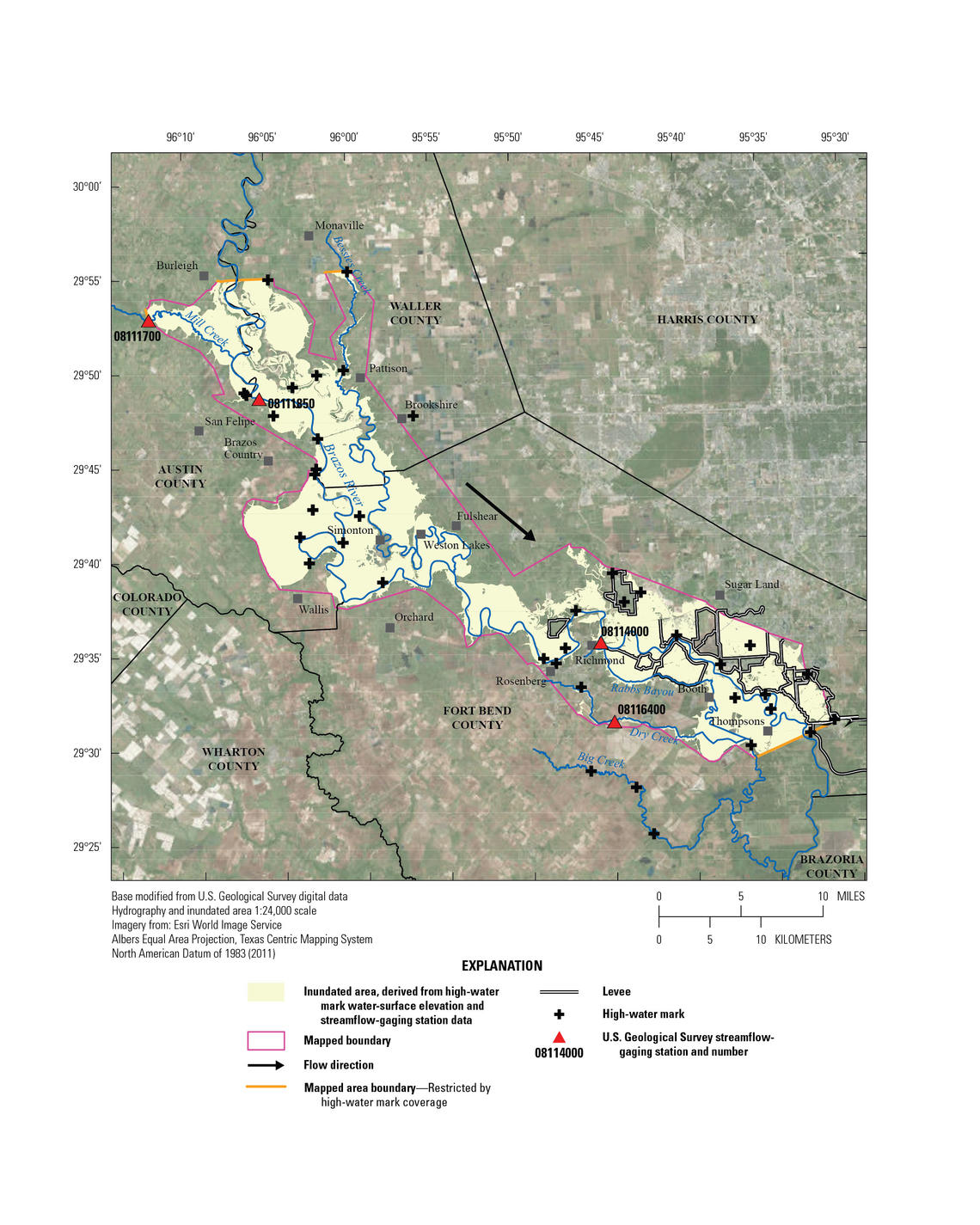Due to a lapse in appropriations, the majority of USGS websites may not be up to date and may not reflect current conditions. Websites displaying real-time data, such as Earthquake and Water and information needed for public health and safety will be updated with limited support. Additionally, USGS will not be able to respond to inquiries until appropriations are enacted. For more information, please see www.doi.gov/shutdown
Post-Harvey Report Provides Inundation Maps and Flood Details on “Largest Rainfall Event Recorded in US History”
Post-Harvey Report Provides Inundation Maps and Flood Details
Largest Rainfall Event Recorded in US History
Nineteen inundation maps and detailed flood information from Hurricane Harvey are now available from the U.S. Geological Survey, in cooperation with the Federal Emergency Management Agency. Hurricane Harvey was the most significant rainfall event in U.S. history, both in scope and peak rainfall amounts, since records began in the 1880s.
Hurricane Harvey’s widespread 8-day rainfall, which started on August 25, 2017, exceeded 60 inches in some locations, which is about 15 inches more than average annual amounts of rainfall for eastern Texas and the Texas coast. The second largest rainfall event recorded in continental U.S. history was during Tropical Storm Amelia in 1978, which left Texas Hill Country with 48 inches of rain. Not only were rainfall totals exceptional during Hurricane Harvey, the area affected was also larger than previous events.
In the immediate aftermath of Harvey, the USGS and FEMA initiated a study to evaluate the magnitude of flooding, determine the probability of future occurrence and map the extent of the flooding in Texas. USGS field crews collected 2,123 high-water marks in 22 counties in southeast Texas and three parishes across southwest Louisiana. Although parts of central Louisiana experienced Harvey related flooding, this report only documents the extent of flooding in southwest Louisiana along the Sabine River. High-water mark data, along with flood flow information from USGS streamgages, were used to create 19 inundation maps to document the areal extent and depth of the flooding.
FEMA requested time-perishable high-water marks, updated water-level records and Harvey inundation maps, which are key materials that will be used by state and local resource managers. The data and records will assist officials in updating building codes, planning evacuation routes, creating floodplain management ordinances, providing environmental assessments and planning other community efforts to become more flood-resilient.
Record streamflow was measured at 40 USGS streamgages in Texas that have been in operation at least 15 years. At two streamgage locations, scientists determined that the percent chance for flooding of this magnitude to happen in any given year was 0.2 percent. This probability is also referred to as a 500-year flood. Thirty other USGS streamgages experienced flooding at levels with a 1 percent chance of occurring each year, also known as a 100-year flood.
“The USGS had more than 100 employees from 16 states in the field working around the clock for about five weeks collecting flood measurements after the storm,” said Tim Raines, USGS Texas Water Science Center Director. “Our crews are dedicated to making sure emergency managers have the information they need to help keep Texans safe – during the storm and into the future.”
The USGS conducts research on the physical and statistical characteristics of flooding, estimating the probability of flooding at locations around the United States. FEMA uses this information to revise their Flood Insurance Rate Maps. These maps help identify areas most likely to experience flooding in any given year.
The USGS produced 19 maps for six heavily flooded river basins, to include the Lower Brazos, Lower Neches, Pine Island Bayou, Sabine, San Jacinto and San Bernard, as well as the coastal areas of Corpus Christi, Port Aransas and Matagorda Bay.
The full report is available online.






